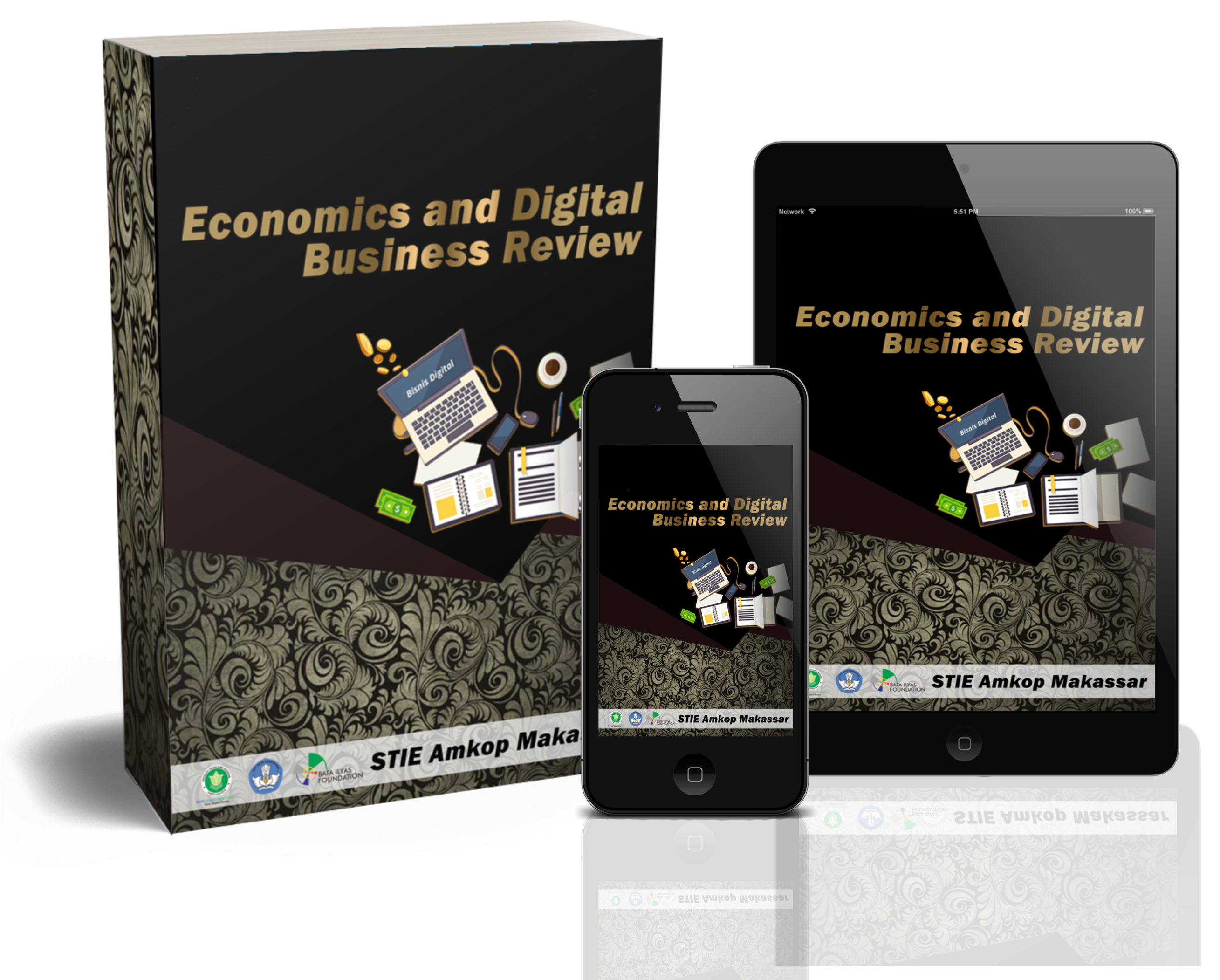Main Article Content
Abstract
This research was conducted at the Soppeng Police Station. The Population is all 200 Police officer, because of the large number, Slovin is used, the result is 67 respondent who are sampled with a margin of error set 10% or 0.10. Data collection methods used are direct interviews with parties involved with the problem being discussed and giving questionnaires to Police in accordance with the research conducted. Data analysis was performed using linear multiple regression analysis, T- test, F-test and the coefficient of determination (R2) test. The results of the analysis show that (1) leadership influences performance of the Police in the Soppeng District Police; (2) competence influences performance of the Police in the Soppeng District Police; (3) discipline that supports performance of the Police in Soppeng District Police; (4) leadership, competence, and discipline influence performance of the Police in the Soppeng District Police.
Keywords
Article Details

This work is licensed under a Creative Commons Attribution-ShareAlike 4.0 International License.
References
- Anwar P, Mangkunegara. (2018). Intensive Provision of Employee Performance through Employee Competence at the Human Resources and Human Resources Development Agency in Soppeng Regency. Human Resource Management, Jakarta, Kencana. Pernada Media Group.
- Anthonia, Adeniji A. & Osibanjo A. Omotayo. (2012). Human Resource Management: Theory and Practice. Agege, Punmark Nigeria Limited.
- Ata Ghalem dkk. (2016) Performance: A concept to define! https://www.researchgate.net/publication/316630175
- Edy Sutrisno. (2010), Human Resource Management, Jakarta, Kencana. Pernada Media Group.
- Esther Patricia Paoki dkk. The Effect of Work Discipline And Team Work on Employee Performance (Case Study at PT. Bahasa Technology Solutions). Jurnal EMBA, Vol.5 No.2 Juni 2017, Hal.2385-2393.
- Fathoni, Abdurrahmat. (2006). Organization and Resource Management. Human. Jakarta.
- Hager, Paul & Andrew Gonczi. What is competence? Medical Teacher, Vol. 18, No. 1, 1996.
- Hasibuan, Malayu S. P. (2013). Human Resource Management. Jakarta: PT. Earth Literacy.
- https://sph.uth.edu/content/uploads/2012/01/Competencies-and-Learning-Objectives.pdf
- https://www.yourarticlelibrary.com/essay/discipline/essay-on-discipline-definition-concept-components-and-principles/63727
- Indrawijaya. (2000). Organizational Behavior. Bandung: Sinar Baru Algesindo.Mathis, R.L. & J.H. Jackson. (2006). Human Resource Management: Human Resource Management. Dian Angelia's translation. Jakarta: Salemba Empat. Jon R. Katzenbach and Douglas K. Smith. https://hbr.org/1993/03/the-discipline-of-teams-2.
- Mangkunegara (2009). Human resource management. Teen Rosdakarya. Bandung.
- Mirela-Oana Pintea and Monica-Violeta Achim. Performance - An Evolving Concept. https://core.ac.uk/download/pdf/6239858.pdf.
- Open Textbooks for Hong Kong. (2016).
- Revinan,T. Spencer. (2014), Human Resource Management for Companies: From. Theory to Practice. Jakarta: PT. Rajagrafindo Persada.
- Reni Rosari. Leadership Definitions Application for Lecturers’ Leadership Development. Journal of Leadership in Organizations Vol.1, No. 1 (2019) 17-28.
- Sharma, Manoj Kumar and Shilpa Jain. Leadership Management: Principles, Models and Theories. Global Journal of Management and Business Studies. Volume 3, Number 3 (2013), pp. 309-318.
- Uku Lillevali and Marge Taks. Competence Models as a Tool for Conceptualizing the Systematic Process of Entrepreneurship Competence Development. Education Research International, https://doi.org/10.1155/2017/5160863.
References
Anwar P, Mangkunegara. (2018). Intensive Provision of Employee Performance through Employee Competence at the Human Resources and Human Resources Development Agency in Soppeng Regency. Human Resource Management, Jakarta, Kencana. Pernada Media Group.
Anthonia, Adeniji A. & Osibanjo A. Omotayo. (2012). Human Resource Management: Theory and Practice. Agege, Punmark Nigeria Limited.
Ata Ghalem dkk. (2016) Performance: A concept to define! https://www.researchgate.net/publication/316630175
Edy Sutrisno. (2010), Human Resource Management, Jakarta, Kencana. Pernada Media Group.
Esther Patricia Paoki dkk. The Effect of Work Discipline And Team Work on Employee Performance (Case Study at PT. Bahasa Technology Solutions). Jurnal EMBA, Vol.5 No.2 Juni 2017, Hal.2385-2393.
Fathoni, Abdurrahmat. (2006). Organization and Resource Management. Human. Jakarta.
Hager, Paul & Andrew Gonczi. What is competence? Medical Teacher, Vol. 18, No. 1, 1996.
Hasibuan, Malayu S. P. (2013). Human Resource Management. Jakarta: PT. Earth Literacy.
https://sph.uth.edu/content/uploads/2012/01/Competencies-and-Learning-Objectives.pdf
Indrawijaya. (2000). Organizational Behavior. Bandung: Sinar Baru Algesindo.Mathis, R.L. & J.H. Jackson. (2006). Human Resource Management: Human Resource Management. Dian Angelia's translation. Jakarta: Salemba Empat. Jon R. Katzenbach and Douglas K. Smith. https://hbr.org/1993/03/the-discipline-of-teams-2.
Mangkunegara (2009). Human resource management. Teen Rosdakarya. Bandung.
Mirela-Oana Pintea and Monica-Violeta Achim. Performance - An Evolving Concept. https://core.ac.uk/download/pdf/6239858.pdf.
Open Textbooks for Hong Kong. (2016).
Revinan,T. Spencer. (2014), Human Resource Management for Companies: From. Theory to Practice. Jakarta: PT. Rajagrafindo Persada.
Reni Rosari. Leadership Definitions Application for Lecturers’ Leadership Development. Journal of Leadership in Organizations Vol.1, No. 1 (2019) 17-28.
Sharma, Manoj Kumar and Shilpa Jain. Leadership Management: Principles, Models and Theories. Global Journal of Management and Business Studies. Volume 3, Number 3 (2013), pp. 309-318.
Uku Lillevali and Marge Taks. Competence Models as a Tool for Conceptualizing the Systematic Process of Entrepreneurship Competence Development. Education Research International, https://doi.org/10.1155/2017/5160863.
